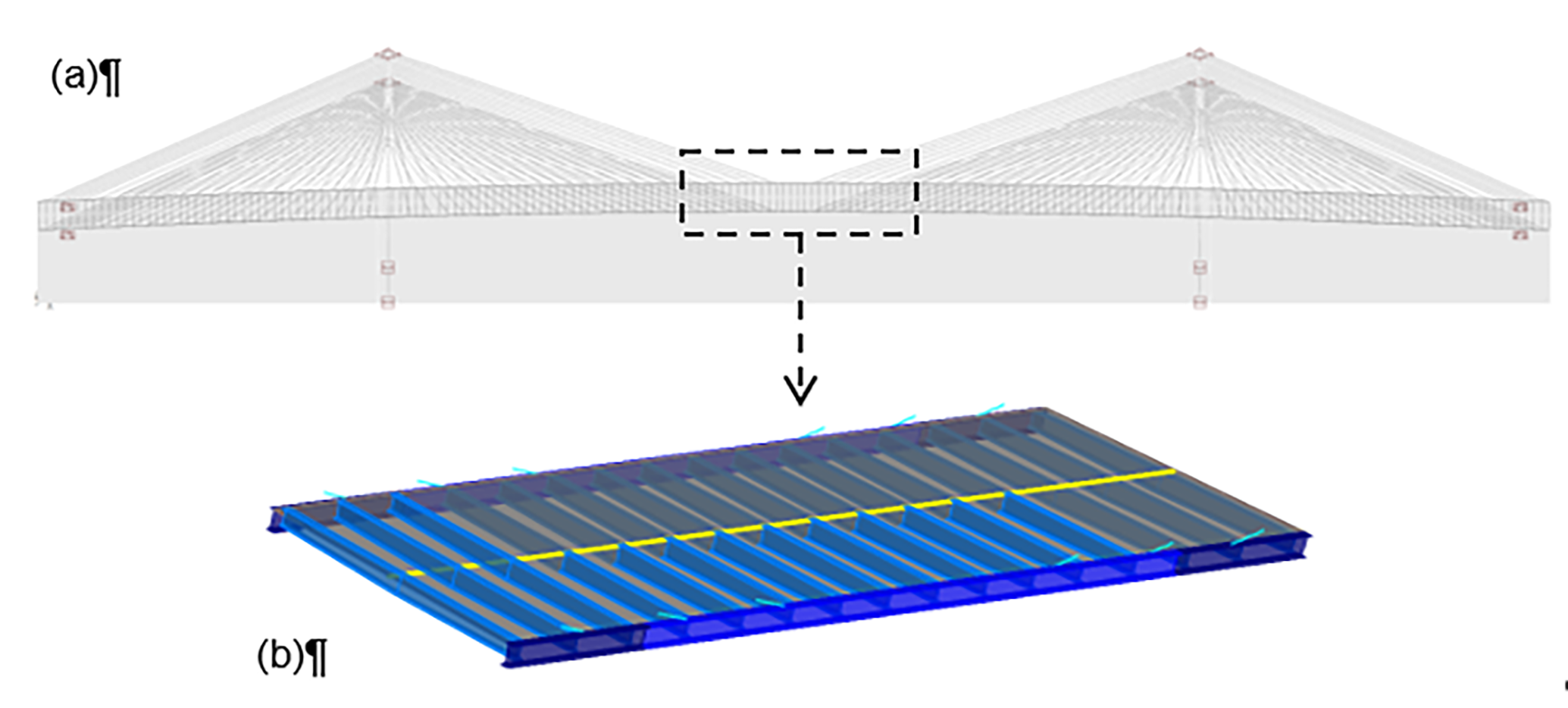Analysis of composite bridge decks supported by stay cables
Author: Eliane Kalberer
Language: English
Abstract
The composite deck has proven a very economical and time efficient solution for cable stayed bridges for main spans ranging between 200 and 600 m. A typical composite ladder deck system is composed of two steel edge girders connected transversely by steel floor beams at regular intervals. These steel girders and floor beams support the concrete deck slab, consisting of precast concrete panels made continuous by cast-in-place joints.
The concrete deck spreads local concentrated loads to the supporting steel frames, assists in carrying global bending in between the stay cables and resists the axial forces that are introduced at the anchorages, due to the horizontal component of the cable reaction.
The goal of this thesis is to determine different important consideration factors to simplify the reinforcement design in the concrete deck due to traffic loading. The combination of the local and global effects are studied at different locations along the bridge with the help of a variety of structural models differing in degree of complexity.
The Alex Fraser Bridge in Vancouver, Canada is chosen as an example to apply the various modelling techniques. It features a very typical geometry, for this bridge type; therefore, the results and conclusions of this study can be adapted to a wide range of cable-stayed bridges.
Initially, the importance of the system behaviour is studied by analysing the influence lines of different models, listed in order of increasing complexity:
- Beam-on-elastic-foundation approach, where the vertical stiffness provided by the stay cables is captured with the use of equivalent springs
- Two-dimensional (2D) spine model for the superstructure supported on equivalent springs
- Three-dimensional (3D) spine model, where the towers and stay cables are modelled explicitly
- Three-dimensional (3D) model with a grillage system for the deck, where floor beams are modelled explicitly, in addition to the edge girders, towers and stay cables
Further, the deck system is modelled separately to study the local behaviour utilising two different approaches:
- Two-dimensional (2D) beam (slab)-on-elastic-foundation approach, where the stiffness of the floor beams is captured with the use of equivalent springs
- Three-dimensional (3D) finite element model of a portion of the bridge deck system, where the slab is modelled explicitly via shell elements
The 3D global model is then further refined, based on the observations of the local model studies, and the effects of the global forces on the deck are estimated. The critical forces for reinforcement design in the deck are studied. The combinations for maximizing tension or compression due to global bending and normal forces, and corresponding hogging and sagging, due to local and global effects, or vice versa, are analysed at different locations of the bridge. These effects seem to be mainly dependent on the floor beam and cable spacing and can therefore be generalized for different locations along the bridge.
Lastly, the spatial variability of the moments and the accuracy of the simplified local 2D model can be evaluated via the 3D FEM model. It can be seen that although the two-way action in the slab is pronounced, the simplified model captures the effects relatively well in extent and magnitude.

